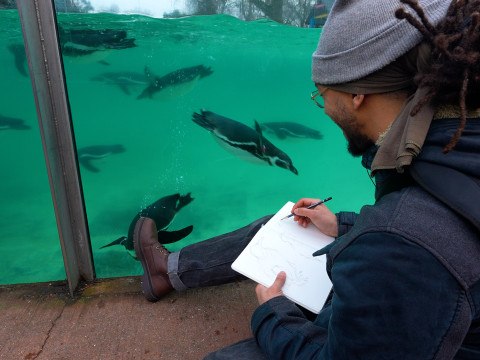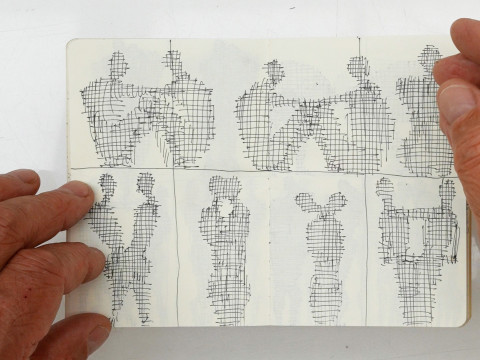
Lessons in life, love and art from Marina Abramovic
By Harriet Baker
Published on 22 October 2015
From losing consciousness to sitting motionless every day for three months, the inimitable artist pushes her body to its limits. Watch her in conversation with Bryan Appleyard.
Marina Abramovic has earned worldwide acclaim for her performance art. Often enduring repeated injuries or remaining motionless for hours at a time, she transcends the limits of her body. Early on in her career, while living in her native Serbia, she lay down in a flaming five-point star until she lost consciousness. Over 40 years later, she positioned herself on a chair in MoMA and, every day for three months, engaged with her audience in silence, despite the intense pain that ravaged her back.
Through her extreme displays, she has sought to reclaim the genre of performance art from its marginal position in the art world, by showing that it can be a vehicle for highly emotive and political messages. Her motifs of hardship and endurance have frequently been described as a critique of the harsh Communist regime in which she grew up in Yugoslavia.
In a recent event at the RA, Abramovic spoke to students of the RA Schools about the lessons she has learned over her career. They ranged from the romantic to the professional. "Never fall in love with an artist," she joked – referencing her creative and romantic partnership with Ulay, which ended after 12 years of collaboration. She went on to explain what it takes to be a performance artist, from ascetic training of both mind and body, to the ability to communicate with an audience through non-verbal means.
Here, we present four of the top moments from her discussion with the students, and with the journalist and writer Bryan Appleyard.
"You can't make good work if you're happy."
Abramovic argues that her creativity stems from her unhappy childhood in Belgrade, Serbia. Her parents were partisans during the Second World War and were staunch supporters of the Communist regime. After her father left the family, Abramovic remained with her mother, with whom she had a complicated relationship. It was from this restrictive background that the 29 year-old Abramovic fled to western Europe to make art.

See Marina Abramović's work at the RA
In 2020 the pioneer performance artist will fill our Main Galleries with a major solo exhibition.
"Performance art becomes life itself."
For eight hours a day, every day for three months, Abramovic sat facing members of her audience in MoMA in her most remarkable show to date. In this excerpt, she explains what lead her to this performance, and what it takes as a performance artist to complete projects of such astonishing duration. It is through such works that Abramovic has brought the genre of performance art out of the shadows and its peripheral position in the art world.
It was during her performance at MoMA that her ex-lover Ulay appeared to surprise her. The emotional response was immediate.

The Artist is Present, 2010

The Artist is Present, 2010

The Artist is Present, 2010
"My work doesn't exist without the audience."
Abramovic's practice rests on her engagement with her audience. Her purpose, she explains, is to absorb and re-transmit their energy. If someone gets up to leave, then she has failed.

The Artist is Present, 2010

The Artist is Present, 2010

The Artist is Present, 2010
"This is a real gift to you."
In these two exercises, Abramovic teaches her audience two handy tricks for positive energy and anger-management.
Related articles

Video: drawing penguins at London Zoo
3 February 2025

My sketchbook: sculpture drawings by Antony Gormley RA
13 January 2025

Video: Merry Christmas from the Burlington House choir
18 December 2024


